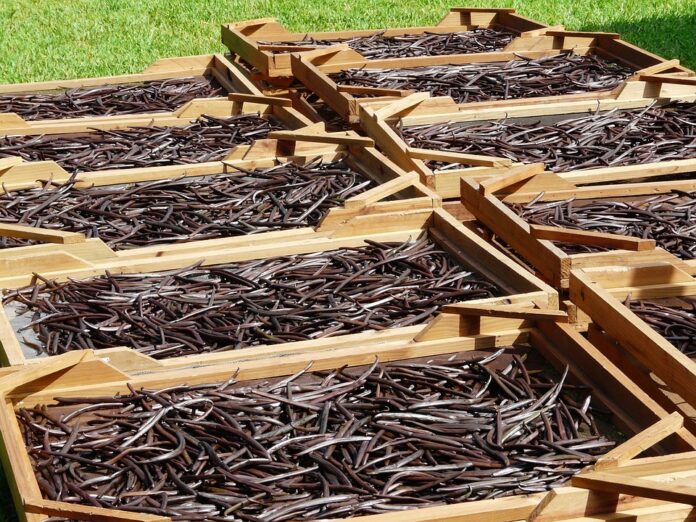Introduction
The recent surge in vanilla prices has left many consumers puzzled as to why their favorite products have become more expensive. Inflation, the general increase in prices of goods and services, is a key factor behind this rise in vanilla prices. In this report, we will explore the reasons behind the increase in vanilla prices, the impact of inflation on consumers, and what this means for the industry as a whole.
Understanding Vanilla Prices
Vanilla Market Overview
Vanilla is one of the most popular and widely used flavors in the world, with applications in food, beverages, cosmetics, and pharmaceuticals. The majority of the world’s vanilla supply comes from Madagascar, followed by other producing countries such as Indonesia, Mexico, and Tahiti.
The vanilla market is notoriously volatile due to its labor-intensive cultivation process, susceptibility to natural disasters, and the limited number of producing regions. In recent years, the vanilla market has experienced significant price fluctuations, with prices reaching record highs in 2018.
Factors Driving Vanilla Prices
Several factors contribute to the increase in vanilla prices. One of the primary reasons is the limited supply of vanilla beans. Vanilla orchids require specific growing conditions and a labor-intensive pollination process, making it difficult to increase production quickly in response to rising demand.
Additionally, natural disasters such as cyclones and droughts in major vanilla-producing regions can devastate crops and lead to shortages in the market. The combination of limited supply and high demand from various industries has driven up vanilla prices in recent years.
The Role of Inflation
Definition of Inflation
Inflation is the rate at which the general level of prices for goods and services is rising, resulting in a decrease in purchasing power. Inflation is typically measured by the Consumer Price Index (CPI), which tracks the prices of a basket of goods and services commonly purchased by consumers.
Impact of Inflation on Vanilla Prices
Inflation plays a significant role in the rise of vanilla prices. As the overall cost of living increases due to inflation, businesses are forced to raise prices to maintain profitability. This includes the cost of raw materials such as vanilla beans, which are passed on to consumers in the form of higher prices for vanilla products.
Inflation also affects the cost of production for manufacturers, including packaging, transportation, and labor expenses. These additional costs are often reflected in the retail prices of vanilla products, further contributing to the overall increase in prices.
Implications for Consumers
Higher Prices for Vanilla Products
The rise in vanilla prices due to inflation has direct implications for consumers. Products that contain vanilla as an ingredient, such as ice cream, baked goods, and fragrances, are likely to see price increases as manufacturers adjust to higher production costs.
Consumers may also notice higher prices for vanilla extract, a popular baking ingredient made from vanilla beans. The increased cost of vanilla beans has led to higher prices for vanilla extract, impacting consumers who enjoy baking at home.
Consumer Behavior Changes
In response to rising prices, consumers may alter their purchasing behavior. Some may choose to purchase alternative products that do not contain vanilla or opt for synthetic vanilla substitutes. Others may reduce their consumption of vanilla products or look for discounts and promotions to mitigate the impact of higher prices.
Industry Response
Impact on Food and Beverage Industry
The food and beverage industry, which relies heavily on vanilla as a flavoring agent, is feeling the effects of the rise in vanilla prices. Manufacturers are grappling with higher production costs and may be forced to adjust their pricing strategies to remain competitive in the market.
Some companies have turned to alternative vanilla sources, such as synthetic flavors or vanilla flavoring blends, to offset the rising cost of natural vanilla beans. Others have passed on the cost to consumers through price increases or reduced product sizes to maintain profit margins.
Long-Term Sustainability Challenges
The volatility of the vanilla market and the impact of inflation pose long-term sustainability challenges for the industry. Fluctuating prices and supply chain disruptions can make it difficult for businesses to plan and budget effectively, leading to uncertainty in the market.
To address these challenges, industry stakeholders are exploring ways to improve vanilla cultivation practices, increase transparency in the supply chain, and diversify sourcing options to reduce reliance on a single producing region. Collaboration between producers, manufacturers, and consumers is essential to ensure the long-term viability of the vanilla industry.
Conclusion
In conclusion, the rise in vanilla prices can be attributed to a combination of factors, including limited supply, natural disasters, and the impact of inflation on production costs. Consumers are likely to experience higher prices for vanilla products as businesses adjust to these market conditions.
Industry players must adapt to the changing landscape by exploring alternative sourcing options, improving supply chain resilience, and engaging with consumers to communicate the challenges facing the vanilla industry. By working together, stakeholders can navigate the complexities of the vanilla market and ensure the availability of this beloved flavor for years to come.




